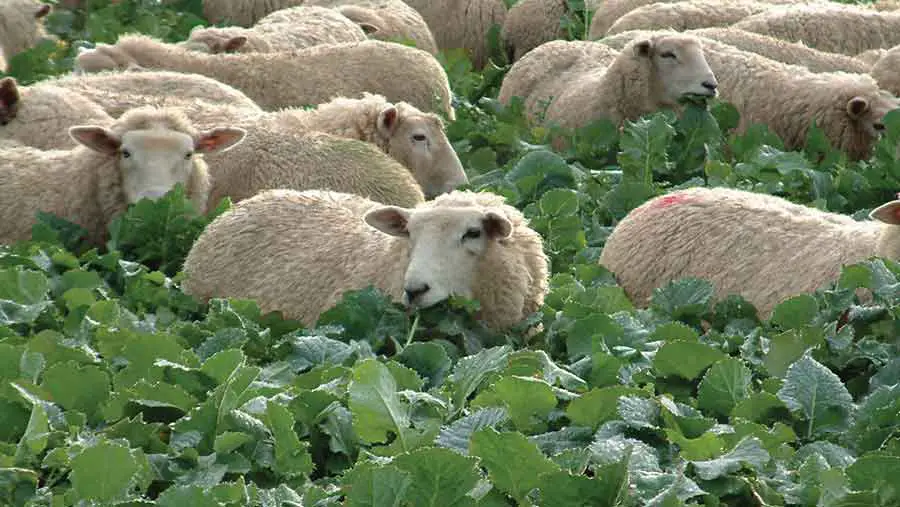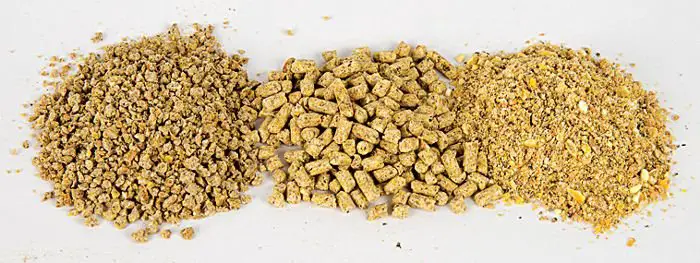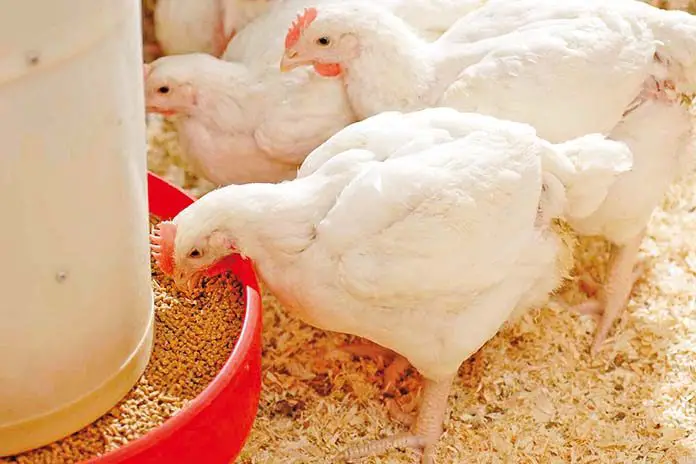Sheep can feed on a wide variety of forages but are predominantly grazers, eating grass as their main supply of nutrients. Sheep can utilize grass and other high-fiber forages because sheep are ruminants. Their four-chamber stomachs have bacteria that digest the forage and release volatile fatty acids, vitamins, and other nutrients that the sheep absorb and utilize for growth and maintenance. Kale is a member of the cabbage family, brassica species, and has been improved over the years to feed ruminant animals like sheep. Kale is the highest yielding among the brassica family and can be grown as a sole crop or mixed with other forage species like grasses. Kale has a good protein level averaging 20% which helps when fed together with grasses which have a low protein level.
Contents
Should I Grow Kale as Feed for Sheep?
When feeding sheep, the idea is to take advantage of their potential to convert feed into meat for retail purposes or maximize their breeding potential. Sheep feed hence can be designed specifically for maintenance, growth, or breeding but the bulk of sheep feed is made up of forages. Forages can be given to sheep in the form of grass or legume hay, pastures, and freshly cut forage carried to feeding troughs. The cheapest way to feed sheep is to graze them on pasture which removes the processing costs that hay and cut and carry systems have on the sheep enterprise. Kale is a very high-yielding crop that is also quite hardy and hence can be grown in winter in colder regions of the globe. This ability to resist frost means that kale is a good forage crop for sheep winter feeding supplying energy and protein, excess kale can be wilted and made into silage or straw to preserve it for later feeding. Before a farmer chooses to grow kale for feeding sheep, careful consideration needs to be done on the following:
- How many sheep does the farmer intend to feed?
- Which season is the kale required for feeding?
- How much land is available for growing the forage kale?
- Is the land available to be used for other crops?
Kale in sheep grazing systems should be grown in time-spaced batches so that there is always young forage available for grazing and extending the grazing period. Kale has a good biomass yield, and an average protein level but low fiber content which means that when fed to sheep care must be taken to avoid bloating.
Challenges of Feeding Kale to Sheep
Kale as noted is an important fodder crop for sheep feeding and supplying energy and protein in times of feed shortages especially periods when grass growth is impaired by weather. However prolonged feeding of sheep with kale has not really given good results in terms of growth despite the high digestibility of the forage. What normally causes bloat in sheep is the feeding of any young, and lush forage with low fiber, and high digestibility, scours or diarrhea are also an issue due to the low fiber content of kale. Kale also contains substances that are toxic to sheep when consumed in large quantities like nitrates, oxalates, glucosinolates, and hemolytic anemia factors. These chemicals can cause nitrate poisoning, goiter, and anemia in sheep feed large quantities of kale as a sole feed. In order to reduce the harmful effects of these chemicals and incidences of bloat the sheep should be introduced to kale slowly for example initially just grazing them for 1 to 2 hours before letting graze them full time on pasture. This gives the sheep’s digestive system time to adjust to the new feed and avoid any digestive upsets Sheep should have access to grass hay and clean water always while being grazed on kale, mineral blocks also help maintain the calcium-to-phosphorus ratio so should also be available. Controlled strip grazing also ensures maximum utilization of the kale without wastage as sheep walking through the pasture tend to trample the kale. The goal of sheep production is to produce meat for consumption and the feeding of kale has shown good results in terms of growth gain apart from the fact that some consumers have noted a stronger flavor of the meat which some found unacceptable.
Can Sheep Eat Clover?
Clovers are a group of legume plants that are valuable for animal feeding and found native to many continents most common are red and white clovers. Clovers have a high protein level like most legumes and sheep can eat clover in moderate amounts to get valuable protein. The best clovers for sheep feeding are medium white or dutch clovers grown or fed together with grass. Clovers need to be introduced to sheep slowly as they can cause bloating when introduced suddenly or fed in large amounts. In most cases, clovers are sown together with grass pastures like Timothy, fescue, and ryegrass to provide a balanced pasture and avoid bloat. Sheep can eat clovers with no issues as long as they also have access to high fiber forage like grass and grass hay.
Can Sheep Eat Dog Food?
Sheep are ruminants and have a digestive system designed to digest high-fiber feed mostly from grazing grass and other forages. Most dog food is however designed for omnivorous dogs, these feeds are high in carbohydrates, animal protein, and fat and low in fiber. Feeding sheep high carbohydrate, and low-fiber feed can lead to acidosis and bloating, conditions that can prove deadly to sheep if not treated. The fat in dog food can coat the fiber in the rumen preventing normal digestion by the fiber-digesting bacteria in the rumen. It is hence not available to give sheep dog food to eat as they can get digestive upsets.
Conclusion
Sheep can eat kale and it is a very good feed for sheep, but careful considerations and safeguards have to be in place to avoid digestive and metabolic issues. Kale should be introduced slowly to sheep of all ages and fed in conjunction with good-quality grass hay. Kale can also be sown together with grass pastures and grazed safely to sheep.




